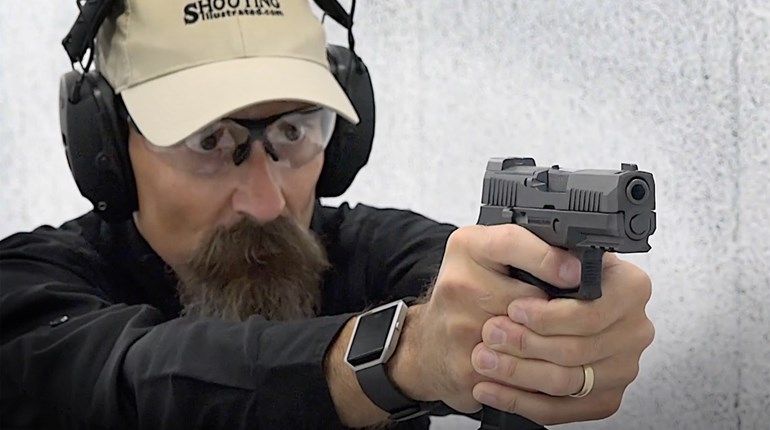
We live in stressful times. With much of the country operating in low-contact mode, thanks to COVID-19, it’s easy for frustration and boredom to set in. Many shooting ranges have been forced to cancel matches and formal events. Combine this with the current ammunition shortage, and the stress for gun owners becomes even worse. Why not spend some of this time working on shooting skills?

While it isn’t always possible to shoot on a range, you can certainly upgrade your skills at home by improving your gear manipulation skills—specifically your draw. Repetition is the mother of skill-building and repetition of your draw pays off, making you faster, safer and more precise. A cleaner and faster draw will not only cut time off your scores, it also improves your chances in a deadly force event and enhances your conditioned responses as a safer gun handler.
In my classes, I remind students of the scene in Taxi Driver when the character, Travis Bickle, stands in front of a mirror and asks the proverbial question, “You talkin’ to me?” Okay, so the movie was a bit creepy, and Travis wasn’t exactly a role model, but the point is that repetition builds speed and skill. The object is to self-critique your draw and eliminate issues that slow you down or are unsafe. Standing in front of a mirror may help you in this. The idea is to build a proper draw that’s safe and gets the gun to horizontal and then develop speed. Before training, remove the magazine, check for a clear chamber at least three times, holster and conceal—if that’s your goal.
Traditionally, the draw is taught as a four-point combat draw stroke, but it should be one continuous smooth and fast motion. All points of the four-point method are crossed, but the goal is for fluid and fast motion. At the beginning of the draw from concealment, the support hand clears the cover garment as the strong hand grasps the gun. The strong hand’s grip must be established with first contact to assure a proper grip at completion of the draw. Grip should be firmly on the gun from the time it leaves the holster. Otherwise, there’s an opportunity to fumble as an adjustment is made. Care should be taken to not sweep the muzzle with the support hand. As the gun clears the holster, the barrel should be rotated to horizontal. As the gun rises to upper chest level, the support hand joins the grip with the gun maintaining horizontal attitude. Once the gun is at eye level, the gun is pressed forward into a full shooting position while the sight picture is acquired. The one and only Chris Cerino has a great video that demonstrates this.

Keeping the gun horizontal allows firing a shot at any point after the gun clears the holster, if needed, in a defensive situation. At no point should the barrel of the gun come above the horizontal plane. While the gun could be utilized once it clears the holster, the object is to get the gun to line of sight as fast as possible.
Initially, critique your grip, getting and keeping the gun horizontal and being aware of how the support hand meets with the rising gun. Pay attention to the attitude of the gun and keep it horizontal. Many shooters incorrectly raise the muzzle in late stages of the draw, imitating the early cowboy movies. When the gun is horizontal, you can begin forming the sight picture as the gun is pressed out. In early stages of this, speed isn’t as important as establishing neuro pathways that repeat the same way every time you draw. Think in terms of your movements running on rails, following the same path every time.

The current draw should be exactly like the last one and the next one the same. If you begin the draw with a sloppy grip, focus on that part of the process until you get it right. Do the same thing if you're not keeping the gun horizontal or connecting with your support hand. When you’re hitting all the points, begin to work on speed. If you have a timer, set it for a random beep and yell “Bang” when you complete the draw and are on target with the sights. If you don’t have a timer, there are multiple shot timer apps available for your smartphone.
When you start your car, you find the key in your pocket, orient the key to fit into the key slot, insert the key and start the car. Do you have to think about this? You’ve repeated that process thousands of times and you don’t have to think about it. It just happens. It happens without thought because of repetition. You should develop your draw the same way. Imagine the value of a fast and consistent draw that requires no conscious thought in a deadly force event or at the beginning of a complicated stage in an IDPA or USPSA match. Success comes with attention to details and developing skills through repetition.
It certainly worked for Travis Bickle.
Read more: Excellence in Competition Rifle: Then and Now

































